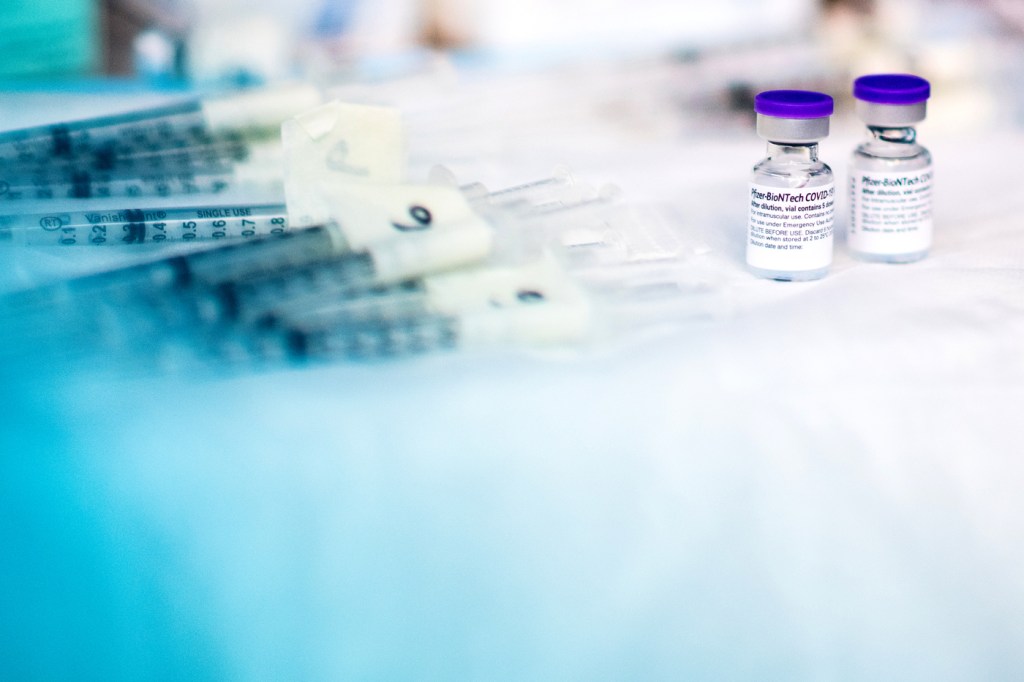Will the new COVID FLiRT variant lead to a summer surge? Watch for these symptoms, experts say
“I don’t expect that we’re going to see in the summer anything that could ultimately be alarming,” says Mansoor Amiji, a distinguished professor of pharmaceutical sciences and chemical engineering at Northeastern.

The Centers for Disease Control and Prevention says wastewater detection of COVID-19 is high or very high in eight states, but whether that means a summer surge in cases remains to be seen.
A member of the FLiRT family of COVID variants called KP.3 is the dominant variant in the U.S., accounting for 25% of cases in the CDC’s most recent count.
Editor’s Picks
The CDC says that while emergency department visits for COVID went up 12.6% in one week, the coronavirus accounts for only 0.6% of both hospitalizations and deaths.
Summer surges
Since the pandemic began, there have been summer surges of COVID that, while smaller than winter peaks, upset vacation plans and even kill medically frail individuals.
“We sort of gear up in the summer for more gatherings,” including graduations, says Neil Maniar, director of Northeastern’s master of public health program.
Larger crowds of people increase the potential for spreading respiratory infections such as COVID, as does travel, he says.
People who got their COVID shots in September, October or November may find their immunity waning this time of year or that the vaccine is not as much in sync with the new variants circulating, including the dominant KP.3 and recently dominant KP.2, Maniar says.
The 2023-24 vaccine more closely targeted the XBB lineage of the Omicron variant.
Wastewater detection of COVID is “very high” in Hawaii, Montana and Texas and “high” in Alaska, California, Connecticut, Georgia and Maryland, according to the CDC.

Less virulent mutations?
Mansoor Amiji, a distinguished professor of pharmaceutical sciences and chemical engineering at Northeastern, says that between vaccination and natural immunity people may still have enough protection to avoid getting infected and contributing to a significant summer surge.
“We’re not seeing the magnitude of hospitalization, at least in the context of where we were a few years ago. I don’t expect that we’re going to see in the summer anything that could ultimately be alarming,” he says.
It may be that the transition from pandemic to endemic phase of disease is underway, Amiji says. He says the latter is when the virus continues mutating, but “mutating towards a less virulent form.”
What are the symptoms?
The symptoms of KP.3 have the familiar hallmarks of the Omicron line, including but not limited to a cough, sore throat, congestion or runny nose, headache, muscle aches, difficulty breathing, fatigue and loss of taste or smell.
Other symptoms include brain fog and gastrointestinal symptoms, according to USA Today.
Amiji says people in vulnerable populations such as those who have autoimmune disorders should make sure they have an up-to-date booster.
People should also consider taking an over-the-counter antigen test for COVID if they have symptoms or are visiting elderly or frail people, Amiji says.
Maniar says people planning a vacation or family reunion might want to consider what he calls “strategic masking” in the days leading up to the event, to avoid contracting COVID.
Masking while in groups or on public transportation is still a good idea “if you are worried about COVID, if you are not feeling well and you want to protect others around you,” Maniar says.
“I think that one of the most important things that individuals should be doing is getting vaccinated,” he says.
“When you get vaccinated, especially in the months immediately following the vaccination, you have the highest degree of immunity.”











